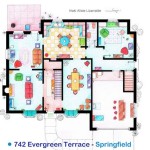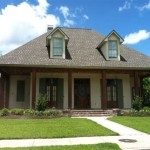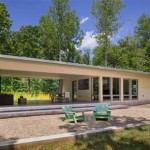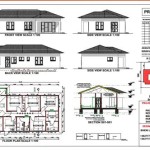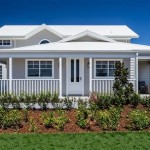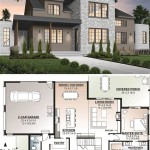Small Row House Plans: Maximizing Space and Style
Row houses, also known as townhouses, offer a unique blend of urban living and private ownership. Characterized by their shared walls and vertical orientation, row houses are particularly prevalent in densely populated areas. Small row house plans represent a growing trend, catering to individuals and families seeking efficient, stylish, and affordable housing solutions.
Designing a small row house presents specific challenges and opportunities. Limited square footage necessitates intelligent space planning and creative design solutions. Architects and designers must prioritize functionality and flow while maintaining aesthetic appeal. Effective use of vertical space, multi-functional furniture, and innovative storage solutions are crucial for optimizing limited floor plans.
Several key considerations influence the design of small row house plans. Local building codes and zoning regulations often dictate allowable building heights, setbacks, and lot coverage. These regulations can significantly impact the overall footprint and layout of the dwelling. Understanding these limitations is paramount for developing a feasible and compliant design.
The orientation of the row house on the site plays a critical role in natural light penetration and ventilation. South-facing facades maximize solar gain during winter months, contributing to energy efficiency. Strategically placed windows and skylights can enhance natural light throughout the interior, reducing reliance on artificial lighting. Cross-ventilation, facilitated by windows on opposite walls, promotes airflow and improves indoor air quality.
The number of stories significantly impacts the layout and functionality of a small row house. Two-story designs often dedicate the ground floor to public spaces like the living room, dining area, and kitchen, while reserving the upper floor for private spaces such as bedrooms and bathrooms. Three-story designs can incorporate additional bedrooms, a home office, or a rooftop terrace, offering greater flexibility for growing families or individuals seeking dedicated work-from-home spaces.
The selection of building materials influences both the aesthetics and the cost of construction. Cost-effective materials like concrete blocks, wood framing, and brick veneer are common choices for row house construction. Sustainable building practices, such as the use of recycled materials and energy-efficient insulation, are increasingly incorporated into modern row house designs, minimizing environmental impact and reducing long-term operating costs.
Interior design plays a vital role in maximizing space and creating a comfortable living environment. Open-plan layouts, which combine the living, dining, and kitchen areas, create a sense of spaciousness and promote social interaction. Light color palettes and reflective surfaces further enhance the perception of light and airiness. Built-in storage solutions, such as under-stair cabinets and recessed shelving, optimize space utilization and minimize clutter.
Outdoor spaces, even within the confines of a small row house, can provide valuable areas for relaxation and recreation. A small patio or balcony can serve as an extension of the living space, offering opportunities for outdoor dining or gardening. Rooftop decks, particularly in three-story designs, provide panoramic views and private outdoor retreats.
The integration of smart home technology is becoming increasingly prevalent in modern row house designs. Automated lighting systems, smart thermostats, and security systems enhance energy efficiency, convenience, and safety. These technologies can be seamlessly integrated into the design, further optimizing the functionality and livability of the space.
Accessibility is an important consideration in row house design, ensuring that the space is usable by people of all ages and abilities. Incorporating features such as ramps, wider doorways, and grab bars in bathrooms can enhance accessibility and promote universal design principles.
Choosing the right small row house plan requires careful consideration of individual needs and preferences. Factors such as budget, lifestyle, and family size influence the selection of the optimal floor plan. Consulting with an architect or designer can provide valuable insights and guidance throughout the design process, ensuring that the final design meets the specific requirements of the homeowner.
Numerous online resources offer pre-designed small row house plans, providing a starting point for homeowners seeking inspiration and guidance. These plans can be customized to meet specific needs and preferences, offering a cost-effective alternative to developing a completely custom design. Thorough research and careful evaluation of available options are crucial for selecting a plan that aligns with individual requirements and budget constraints.
The growing popularity of small row house plans reflects a shift towards more efficient and sustainable urban living. These compact dwellings offer an attractive alternative to traditional single-family homes, providing affordable housing solutions in desirable urban locations. By carefully considering design elements and prioritizing functionality, architects and designers can create small row houses that maximize space, style, and livability.

Narrow Row House Floor Plans Google Layout Design

Modern House Plans By Gregory La Vardera Architect Row Concept Looking Back

Minimal Narrow House Plans Floor

Image Result For Row House Plans In 800 Sq Ft Affordable Map Design

Autocad Files Of Row House Plan
Small Row House Plans At Rs 18000 Projects In Noida Id 23560014155

House Floor Plans

Plan Ysis Of 3 Bhk Row House 135 Sq Mt

34 English Row Houses Ideas House Brownstone Townhouse Designs

Townhomes Townhouse Floor Plans Urban Row House Plan Designers Small

